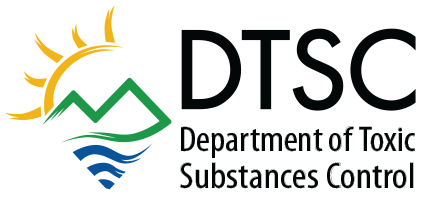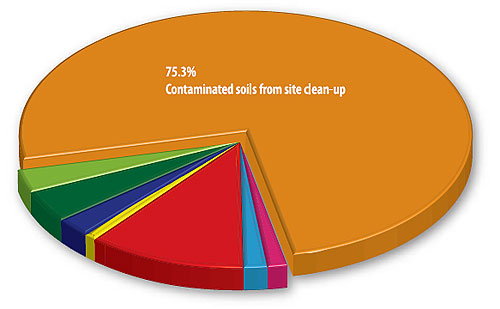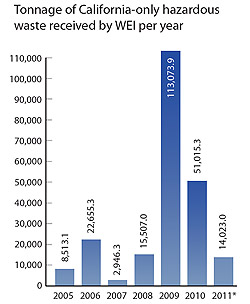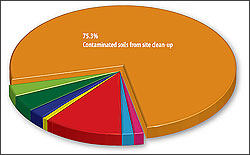Western Environmental, Inc. Overview
Western Environmental Incorporated (WEI) is located in Mecca, which lies within the Coachella Valley near Indio, on tribal land owned by the Cabazon Band of Mission Indians (see map below). DTSC had previously determined that WEI could not legally accept and/or treat “non-RCRA hazardous waste” at their Mecca facility without a valid permit.
In May of 2012, DTSC issued an Evaluation Survey and an Evaluation of Soil Sampling. The Evaluation of Soil Sampling determined that chemical concentrations of the treated soils were below both federal and California hazardous waste limits. The Evaluation Survey outlined seventeen recommendations that would facilitate WEI’s compliance with California standards.
In April 2014, WEI notified DTSC that they are not currently accepting “materials currently regulated as California Hazardous waste”. Therefore, compliance with the seventeen recommendations outlined in DTSC’s Evaluation Survey for operation of a permitted California hazardous waste facility is not required. DTSC will continue to work with CBMI in an advisory capacity, and be available to provide support to the community. For details, please refer to the most recent Fact Sheet.

Please note that Western Environmental Services, Inc., a registered hazardous waste transporter in Glendora, California, Los Angeles County, is not affiliated with the WEI facility in Mecca, California, Riverside County.
Fact Sheets
- Fact Sheet May 2014
- Fact Sheet en español May 2014
- Fact Sheet | en español May 2012
- Media Advisory | en español May 2012
- Fact Sheet Update | en español January 2012
- WEI Work Notice Site Investigation Field Activities | en español December 14, 2011
- WEI Update of Activities | en español November 18, 2011
- DTSC’s Commitment to Protecting the Mecca Community en español August 2011
- Fact sheet – updated June 2011
Evaluation Survey of Facility
- Evaluation Survey
- Executive Summary Evaluation Survey | en español
- Evaluation of Soil Sampling Report
- Executive Summary Evaluation of Soil Sampling
DTSC Internal Process Audit
- Investigations and Air Sampling in Mecca: August 24, 2011 Status Report | en español
- Performance Enhancement Report: The Actions of the California Department of Toxic Substances Control (DTSC) With Regards to the Acceptance of Non-Resource Conservation Recovery Act (RCRA) Hazardous Waste by Western Environmental, Inc (WEI) in Mecca, CA | en español
Access Agreements
Information about the Waste that has Gone to WEI
Mecca-area residents have asked about the types and quantities of waste accepted by the facility. The charts and data below are intended to help residents better understand the types and amount of wastes that were taken to WEI. (Note: Two different versions of the data are provided; one that contains all columns used to track waste, and a “quick view” version that eliminates columns that contained no data. The charts show general categories of wastes that were brought to WEI over time.)
The data which is from 2009 and 2010 manifests (the two years when the amount of waste was highest) show the generator of the waste sent to WEI and the approximate tonnage delivered. Data also show the general categories of hazardous waste – the largest being contaminated dirt removed from toxic cleanup sites – hauled to the facility.
These waste codes provide a picture of the types of wastes that were sent to the facility. People seeking more specific information about wastes sent from individual sites listed in this database may search DTSC’s EnviroStor Website. EnviroStor contains documents and records detailing activity on each site.
You may also contact the agency or company that generated the waste for more information.
- For a complete list of waste codes, view the Supplemental California Manifest Instructions.
- For further information on manifest data, please contact Christie Bautista at CBautist@dtsc.ca.gov or (818) 717-6665.
If you observe activities at the facility that concern you, you can report an environmental concern.
Western Environmental Links
WEI Additional Links
Site Mitigation & Restoration Program Links
- Brownfields
- Cleanup in Vulnerable Communities Initiative (CVCI)
- EnviroStor
- Exide
- Human and Ecological Risk Office
- Lead-Acid Battery Recycling Facility Investigation and Cleanup Program
- Loans & Grants
- Land Use Restriction Sites
- Santa Susana Field Laboratory
- School Sites
- Sea Level Rise
- State Superfund Program
- Strategic Plan and Program Enhancement Work Plan
- Vapor Intrusion
- Contact Information




